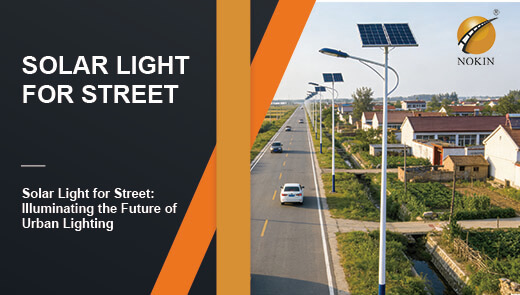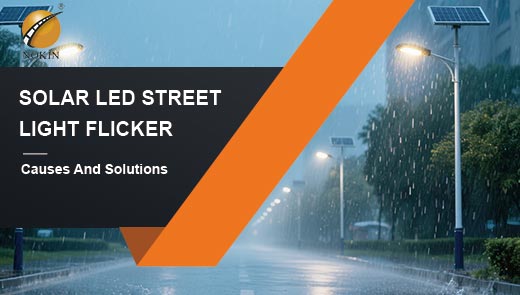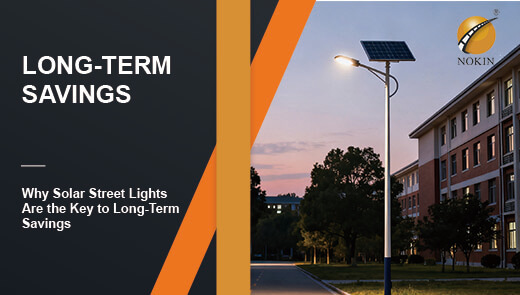Understanding Do Solar Lights Need Direct Sunlight
Many people face a key dilemma when selecting or installing solar lights: if the installation location doesn't receive direct sunlight all day, will the solar lights fail to function properly? The answer is actually more flexible — solar lights can operate without direct sunlight, but direct sunlight directly impacts charging efficiency and nighttime lighting performance. Next, we'll delve into the working principles of solar lights, dissect the core differences between direct and indirect sunlight, analyze key factors affecting charging efficiency, and provide practical tips to help you fully understand solar lights' “sunlight requirements.” This will prevent wasting the device's value due to misconceptions.
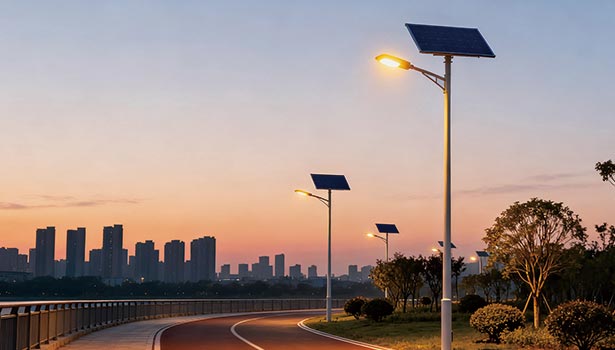
How Solar Lights Work
Photovoltaic Panels
At the heart of photovoltaic (PV) panels lie internal photovoltaic cells. When sunlight strikes the cell surface, it excites electrons within the cell to flow in a specific direction, generating a weak electric current. This process, known as the “photoelectric effect,” forms the foundation of solar light power generation. It's important to note that this conversion process activates whenever light hits the panel—whether it's direct sunlight on a clear day or indirect light on a cloudy day. The only difference lies in light intensity: direct sunlight is stronger, causing more active electron excitation and generating greater electrical output; indirect light is weaker, resulting in slower electron movement and reduced energy conversion.
Battery
The current generated by the photovoltaic panel is transmitted through dedicated wiring to the rechargeable battery built into the solar lamp. Common battery types include lithium batteries and lead-acid batteries. The core function of these batteries is to store the electrical energy converted during daylight hours, preventing energy waste. When daylight is abundant, the battery remains in “charging mode,” accumulating power as sunlight increases. At night or when ambient light dims, the battery automatically switches to “discharging mode,” providing stable power to the lamp.
Lighting Fixtures
Most solar lights feature light-sensitive switches and smart controllers. When ambient brightness drops below a certain threshold (such as at dusk), the light switch automatically activates, directing the battery to supply power to the lamp. The smart controller adjusts the discharge power based on remaining battery charge to prevent over-discharge and prolong battery life.
However, the luminaire's brightness and runtime depend entirely on daytime charging conditions: Sufficient daytime charging (especially under direct sunlight) yields high brightness and extended illumination at night.Prolonged exposure to indirect light during the day results in insufficient charging, potentially causing reduced brightness, shorter runtime, or even premature shutdown at night.
Direct Sunlight vs. Daylight: What’s the Difference for Solar Charging?
Concept Definition and Scenario Differentiation
Direct sunlight refers to unobstructed solar rays hitting the photovoltaic panel surface directly. Common scenarios include midday on clear days or open, unobstructed areas (e.g., rooftop platforms, open lawns, tree-free courtyards). This light is characterized by high intensity and concentrated distribution, maximizing coverage across the panel surface.
Indirect light (also known as diffuse sunlight) is scattered light formed when sunlight passes through clouds, foliage, buildings, or other obstructions. It is common on overcast or cloudy days, or when panels are shaded by trees or buildings. This light is characterized by low intensity and dispersed distribution, unable to concentrate effectively on the panel surface.
Actual Charging Efficiency Comparison
In practical usage, the charging efficiency gap between direct sunlight and indirect light is significant. Under direct sunlight on a clear day, solar panels can achieve 100% charging efficiency. Taking common household solar garden lights (with battery capacities of 2000mAh-5000mAh) as an example, these typically require only 4-6 hours to fully charge the battery. Nighttime illumination can then be reliably maintained for 8-12 hours without significant brightness decay.
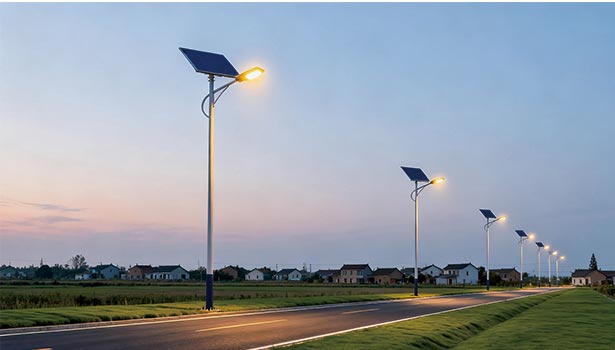
However, under indirect light conditions, the charging efficiency of solar lights decreases significantly depending on light intensity. On cloudy days, efficiency drops to 50%-60%, requiring 8-10 hours to fully charge batteries of the same capacity, while nighttime illumination time shortens to 4-6 hours. Under tree shade or in direct shadow, efficiency plummets to 30%-40%, sometimes resulting in scenarios where “after 8 hours of daytime charging, the light only illuminates for 1-2 hours before running out of power,” severely impacting user experience.
Factors Affecting Solar Light Charging
Weather Conditions
Weather is the most direct external factor affecting solar light charging efficiency, as it directly determines the total amount of sunlight received by the photovoltaic panels. On clear days, with no cloud cover obstructing the sky, sunlight directly strikes the panels, achieving 100% charging efficiency. During cloudy weather, clouds scatter sunlight, reducing the intensity reaching the panels and lowering efficiency to 50%-60%. In rainy or snowy conditions, rain reflects sunlight, while snow accumulation may directly cover the panel surface, completely blocking sunlight. Under these circumstances, charging efficiency further drops to 20%-40%. If snow is not promptly cleared, the charging process may even be temporarily interrupted.
Seasonal Variations
Seasonal changes impact charging efficiency in two dimensions, with winter having the most pronounced effect. During summer, the Northern Hemisphere experiences longer daylight hours (up to 14-16 hours in some regions). The sun's high angle of elevation results in nearly vertical sunlight, providing ample intensity. Photovoltaic panels receive sufficient sunlight daily, maintaining high charging efficiency for solar lights. Winter presents the opposite conditions. Daylight hours in the Northern Hemisphere drastically shorten (as low as 6-8 hours in northern regions), the sun's angle decreases, sunlight strikes the ground at an angle, and light intensity weakens. Photovoltaic panels capture less energy, resulting in charging efficiency 30%-50% lower than in summer. This directly leads to reduced nighttime illumination duration.
Photovoltaic Panel Angle
The installation angle of photovoltaic panels is critical to solar lamp absorption efficiency. Photovoltaic cells maximize light energy absorption only when sunlight strikes the panel surface perpendicularly. Any angular deviation causes sunlight to hit the panel at an angle, resulting in partial light reflection and reduced actual absorption. Specifically: * Correct angle yields 100% efficiency. A 15° deviation reduces efficiency by 10%-15%. * Deviations exceeding 30° cause efficiency to drop by over 30%—effectively wasting nearly one-third of available sunlight. Precise angle adjustment based on regional latitude is therefore essential during installation.
Obstructions
Shadows cast by trees, buildings, billboards, and other obstructions significantly hinder charging efficiency. Many mistakenly believe that “partially exposed panels can still charge normally.” However, solar panels consist of multiple photovoltaic cells connected in series/parallel. If any cells are shaded, the entire circuit's current is affected (similar to the “wooden bucket principle”). It's not the case that “shaded sections stop working while unshaded sections function normally.” Actual testing shows: Shading just one-third of the panel reduces overall efficiency by over 50%. Complete shading renders effective charging nearly impossible, leaving the battery to slowly recharge only from faint scattered light—far insufficient for nighttime needs.
Photovoltaic Panel Cleanliness
The cleanliness of photovoltaic panel surfaces is often overlooked, yet it directly impacts sunlight “penetration.” Dust, leaves, bird droppings, and other contaminants adhering to solar lamp panels act like “filters,” reflecting or blocking sunlight. This prevents sunlight from reaching the internal photovoltaic cells, thereby reducing charging efficiency. Specifically, a thin layer of dust reduces efficiency by 10%-20%, while thicker grime can decrease it by over 30%. Prolonged neglect accelerates panel aging and shortens lifespan. Therefore, regular cleaning—especially in dusty or leaf-prone environments—is essential maintenance.
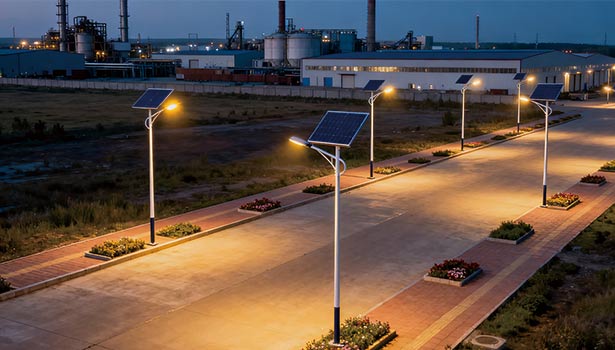
Practical Tips to Boost Solar Light Charging Efficiency
Avoid Deep Shade
Solar lights should never be placed in prolonged “deep shade” environments (e.g., under dense trees, north sides of tall buildings, beneath billboards), where direct sunlight is absent for most of the day. Prioritize open, unobstructed locations during installation to ensure the photovoltaic panel captures the “golden sunlight hours”— — from 10 AM to 3 PM. During this period, sunlight intensity peaks and the angle is optimal, yielding charging efficiency 2-3 times higher than during dawn or dusk. Even if full-day direct sunlight isn't achievable, securing 3-4 hours of direct sunlight during the “golden hours” daily can still meet basic usage requirements.
Optimize Orientation and Angle by Region
Adjust the orientation and angle of the photovoltaic panels according to your location. In the Northern Hemisphere, prioritize south-facing orientation; in the Southern Hemisphere, prioritize north-facing. The tilt angle correlates with latitude: higher latitudes require steeper angles. For example, set 30°-40° tilt at 30°N latitude and 50°-60° at 50°N latitude. Increase the angle slightly in winter (by 10° compared to summer) to ensure sunlight strikes vertically. Commercial solar street lights (integrated photovoltaic panels and luminaires) must be aligned as a whole toward the optimal orientation during installation to avoid wasting over 30% efficiency.
Selecting High-Quality Components
The quality of solar lights on the market varies greatly. Cheap products often suffer from “component downgrading”: smaller photovoltaic panels, lower battery capacity, and simplified controllers. Even under direct sunlight, they may only “charge for 6 hours and illuminate for 3 hours.” When purchasing, focus on core specifications: Select monocrystalline silicon panels with conversion rates above 20% (higher than polycrystalline or amorphous silicon), choose lithium batteries exceeding 5000mAh, and ensure smart controllers are included . For commercial applications, opt for professional brands.
Solar lights do not require “direct sunlight” but prioritize balancing light intensity with effective charging duration. By selecting appropriate installation locations, optimizing panel angles, and maintaining clean surfaces—even without all-day direct sunlight—they can function reliably. Understanding these core principles prevents equipment waste from misconceptions and ensures solar lights truly meet your needs, striking the optimal balance between energy efficiency and practicality.

